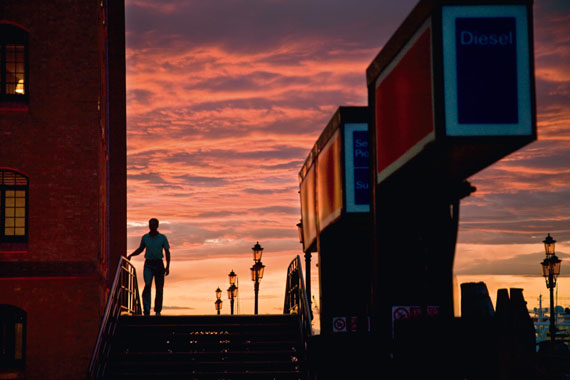
Tim Parchikov »
Suspense: Amber voltage
Exhibition: 11 Oct 2013 – 5 Jan 2014
Domus Artium 2002
Avda. de la Aldehuela, s/n
37003 Salamanca
+34 923-184916
The exhibition "Suspense: Amber voltage" by the Russian photographer Tim Parchikov will be displayed at the Domus Artium DA2 Center in Salamanca (Spain) from October 11 until January 5, 2014. The show, that consists of 54 photographs in color and a video projection, is the result of the visual exploration of Tim Parchikov as a photographer and filmmaker and brings together works created in Russian and European cities over the past four years. The exhibition is organized by diChroma photography.
Parchikov’s project, Suspense, is a visual manifesto of the new “lost generation” of young people who, in the late 20th and early 21st century, have acquired full freedom of information and movement, plus the illusion of total communication, but have lost the integrated system of value judgments, suddenly coming up against the deepest solitude.
Their lives have turned into a solitary journey in search of their lost self-identification, a journey in which each stopover and each encounter with reality is a form of suspense.
Parchikov often conveys anxiety through the twilight drama of illumination of acidic colors in which the invisible, the indiscernible or out of picture elements are as important as the content of the photo. His ability to counteract the static and the dynamic in the picture is based on a superb understanding of cinematography. The result is an exquisite game of colors, shades of shadows and contrast, which fight to approach his prototype's search: the 1940s 'film noir' and the "neo-noir" in the 1970s.
Tim Parchikov has chosen cinema, a key image very close to him, to expose his project: the photos are brilliant as cinema screens and are accompanied by a soundtrack. The background noise which normally goes unnoticed goes into action at a time of unease, filling our perceptual field. In the work of Parchikov suspense enters the natural space, urban space, populating it with their characters.
In cinema, suspense represents an unresolved conflict, an obscure situation, an accumulation of dark anguish. This mode of narration arose in the years following World War II, and almost immediately acquired a new meaning in the context of the second wave of European existentialism, wonderfully adapting itself to portraying the irrational melancholy that pervaded the world in the aftermath of the war.�
Tim Parchikov graduated from the Russian National Film School in 2006 and from the Faculty of Higher Studies for Directors and Screen-Writers in 2007. He lives and works in Moscow. He has exhibited in The Moscow Museum of Modern Art, Schusev State Museum of Architecture and Moscow's, The State Architecture Museum. Notable solo exhibitions include 'Suspense', Moscow Museum of Modern Art (2010), 'Plastification', Gals Gallery, Moscow (2008) 'Suitcase', Schusev Architekture Museum, Moscow (2006). Group exhibitions include 'On the Road', Ashdod Museum of Art (2009), 'Piece of Art', Moscow Museum of Modern Art (2009), Art Moscow, Triumph Gallery (2009), 'The Power of Water', State Russian Museum, St Petersburg (2008), 'Four', Moscow Museum of Contemporary Art (2005).
"Amber Voltage"
What attracts a moth to lamplight? Scientists have no definitive answer to this question, but existing theories suggest that moths (Lepidoptera) use light for orientation purposes. In ancient times the moon and stars served as reliable beacons, but the appearance of man disrupted the moth’s environment, bringing the bonfires, lamps, illuminated windows, street signs and car headlights that attract representatives of the order Lepidoptera. According to one hypothesis, when insects fly into a lighted area they perceive it as an open space, as distinct from restricted and alarming darkness: they literally make for the light in their bid for freedom. With photography this division into light and dark becomes a self-sufficient metaphor for the photographic process, while the pigmented marking on the wings of moths drawn to light is associated with colour prints.
Tim Parchikov’s photographs call to mind both the light from a cinema screen attracting moths-spectators, a B-film – a mystical early-70s thriller along the lines of ‘Who Saw Her Die?’ where the action takes place in a small Venetian piazza by night, and Caravaggio, that great master of lighting effects, as in ‘The Calling of Saint Matthew’, where the light from a window symbolises the enlightenment of faith. This is accompanied by fear of losing your way in a strange town, the need to overcome childhood fears of the dark. The soundtrack recorded for the exhibition evokes a flickering fluorescent lamp, drizzle, a distant passing train, and most dangerous of all – unfamiliar, indecipherable human speech.
Yuri Avvakumov�